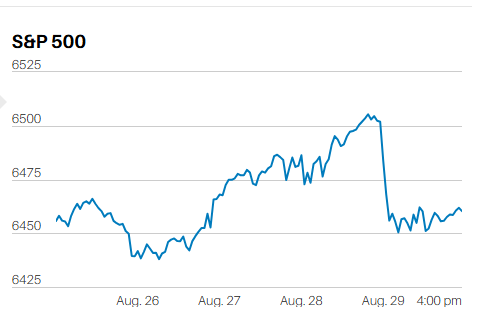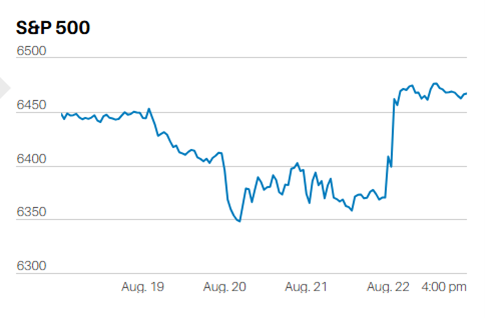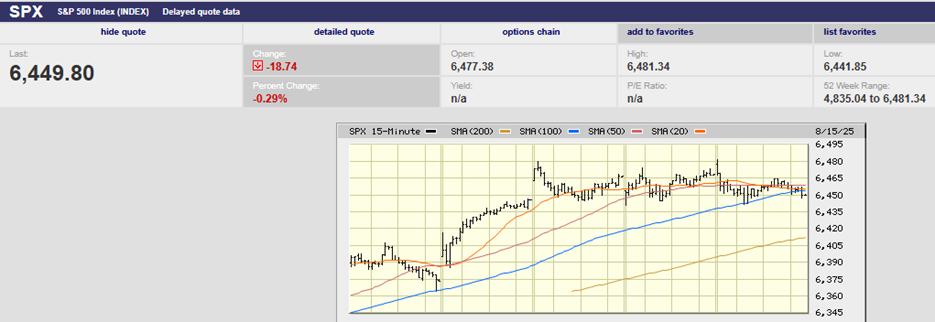Earnings may trump inflation in the coming weeks

Market Update
The S&P 500 rose 2.7% last week to finish at 3999.09. Thursday the S&P pushed above the 200-day moving average, peaking at 3997.76. The high for the day was the trading channel’s downward-sloping resistance line. (See the chart above) The S&P couldn't hold the 200-day Thursday, closing below it at 3983.17. The index did close above the 200-day moving average Friday. It traded as high as 4,003.95 before closing right at the downward-sloping resistance line.
The next few days are critical to the S&P's near-term direction. A close above the resistance line in the coming week means a run to 4,100. Failure to break above over the next few trading days likely means a fall to 3,800. There is considerable support at 3,800. It will take a weak earnings season for the S&P to fall below 3,800. The October lows at 3,491.58 would be next up if the market does break support at 3,800.
Earnings season started mixed on Friday. JPMorgan, BofA, and NY Mellon stock all rose following positive earnings news. Tesla and Delta stock fell on disappointing earnings. Most S&P 500 companies will report over the next six weeks. Earnings are forecast to fall 3.9% in Q4 2022, according to FactSet. It will be the first decline in earnings since Q3 2020.
Analysts have reduced bottoms-up earnings estimates by 6.5% during the 4th quarter. The reduction is greater than normal. The five-year average reduction during a quarter is 2.5%. The 10-year average reduction is 3.3%, the 15-year average reduction is 4.8%, and the 20-year average reduction is 3.8%. The reduction in earnings estimates during Q4 2022 is greater than the five-, ten-, fifteen-, and twenty-year averages. Yet the market has been rising since the October low anyway.
The stock market is focused on inflation and the Federal Reserve’s monetary policy. It does not appear to be focusing on earnings, at least not yet. “We expect earnings to take the center stage going forward,” wrote Savita Subramanian in a BofA Global Research report recently. She also wrote that she expects cuts to corporate earnings estimates to accelerate in the coming months.
Earnings declines could be greater than anticipated. Declining inflation means a decline in the general price level. Declining prices mean compressed margins for companies unless they can reduce costs. A major input cost is labor. And that’s a problem for companies if price increases trail wage increases. That's what will happen if the Fed is successful in corralling inflation. Subramanian believes earnings estimates for 2023 are roughly 15% too high “amid demand uncertainty and a tougher pricing environment,” according to Barron’s.
The Atlanta Fed’s Wage Growth Tracker shows wages up almost 8% in November for workers switching jobs. Wage increases were 5.5% for workers staying in the same job in November. Overall, wage growth was running at 6% year-over-year. Meanwhile, inflation is expected to fall sharply in 2023. The November Survey of Professional Forecasters (SPF) consensus predicts headline CPI inflation of 3.4% by year-end 2023. The survey consensus predicts core inflation will fall to 3.5%. It’s hard to reconcile inflation in the mid-3% range with wage growth holding above 6%. More likely core inflation will remain elevated if wage growth remains elevated. The Fed will keep interest rates high in that scenario, a negative for the stock market. Earnings will disappoint if core CPI does fall to 3.5% while wage inflation remains above 5%. Margin compression is bad for earnings.
And it is far from certain that the SPF consensus will prove correct. The Atlanta Fed’s measure of sticky prices was up 6.7% most recently. The Cleveland Fed’s median CPI rose 6.9% in December year over year. It has shown little improvement over the last three months. The Employment Cost Index (ECI) is released quarterly. Compensation costs were up 5.0% in the 12 months ending 30 September. Costs were up 5.2% for private sector workers. The Q4 ECI will be released 1/31/23.
Inflation won’t fall to 2% with labor costs remaining high unless productivity increases markedly. Productivity gains have been running at only about 1% according to Neil Dutta, head of economics at Renaissance Macro Research. It is unlikely that productivity will make up for wage gains. It is more likely that earnings will disappoint over the next few quarters. The stock market will not take it well if that’s the case.
Economic Indicators
CPI was the big number last week and that had everyone’s attention. The inflation numbers came in as expected. The core CPI, which excludes food and energy, rose 0.3% in December. Year-over-year core CPI rose 5.7%, down from 6.0% the prior month. Progress but still too high. The NY Fed 1-year inflation expectations number was 5.0% down from 5.2%. The one-year forward expectation number is at odds with the SPF consensus. It aligns more with a tight labor market and high wage growth. Along those lines, the initial jobless claims number came in at a low 205,000 down from 206,000. Real hourly wages rose 2.2% in December after rising 0.7% the prior month. The job market data does nothing to advance the belief that wage growth will subside.
The National Federation of Independent Business (NFIB) small business optimism index fell to 89.8 in December from 91.9 in November. It is a six-month low. The index’s historical average is 98. Economists had expected the index to increase to 92.0. The survey is of small businesses in the U.S. which account for almost half of private sector jobs. More businesses in December reported lower profits due to the rise in the cost of materials and labor coupled with weaker sales. Workers are still hard to find, with 41% of owners reporting job openings they couldn't fill. Fewer owners expect business conditions to improve in the next six months.
The economic data show an economy that is growing, maybe even accelerating. The data also show still percolating inflation.
The Barron’s Roundtable
Barron’s has a group of 10 experts come together every year to discuss the economy and markets. They also pass along some of their favorite investments for the coming year. I look forward to the Roundtable every year. The first installment of the three-part article is in this week’s edition.
Barron’s sums up the experts’ views by writing that, “participants agree … the age of free money is over. Valuation matters again in equity markets. Fixed income finally lives up to its name, offering ample income and a viable alternative to stocks.” Barron’s also revealed that most of the experts are expecting sluggish growth or a shallow recession in 2023.
Okay, so what does that all mean?
The consensus is that the low-inflation, low-interest rate era is over. The experts believe that real interest rates (rates minus inflation) will turn positive and remain so. By extension, bonds will once again be a viable alternative to stocks. As well, the cost of capital has gone up.
That's bad news for growth stocks and loss-making companies. Some 40% of the stocks in the Russell 2000 Growth index are unprofitable. Many of them will go out of business without access to free money. Growth stocks in general will underperform value if real interest rates remain high. Private equity investors may regret many of their investments.
The low cost of capital has allowed private equity to flourish over the last decade. There is a lot of debt out there and that debt is becoming more expensive to service. It’s not just the risk-free rate that is rising but also the risk premium. An increased risk premium means compressed price-to-earnings multiples in the public markets. An increasing risk premium will also impact the private equity market.
Rupal Bhansali makes the point that, “no one is looking at private equity which has a lot of exposure to junk bonds that are disguised as equity but are really debt.” She points out that, viewed as debt, much of it would garner a triple-C rating which is the “junkiest of the junk debt.” Private equity’s valuation reset “could create a negative feedback loop in public equity markets, and defaults could create contagion in debt markets generally.”
The above would fall under the “Fed tightens until something breaks” scenario. Quantitative tightening is an unknown. We’ve had little experience with it. Something breaking in the private equity arena is not a high-probability event. The probability will grow though the longer the Fed sticks with QT.
Most of the 10-member panel were calling for a flat to up 10% year for the S&P 500. Mario Gabelli was the most negative, predicting that the S&P will end the year between 3,500 and 3,800. The consensus was for a mild recession if we have a recession at all.
Norwood Economics sees a mild recession starting in the second half of the year. The S&P 500 will find a bottom around 3,200 and finish the year up less than 5%. We are assuming a 10% decline in 2023 earnings, or about $200 per S&P share.
Regards,
Christopher R Norwood, CFA
Chief Market Strategist











